Actions
Below you'll find a list of actions that are specific to AI Agents, as well as where they can be used: either in the Flow Editor, the Function Editor, or both.
Send a Message
Available in: Flow Editor, Function Editor
Send a message to the customer.
You can send messages to the customer just about anywhere in an AI Agent flow. The Send a Message behavior is really just a special wrapper around the Send a Message action with a provision to wait for a customer response before proceeding in the flow.
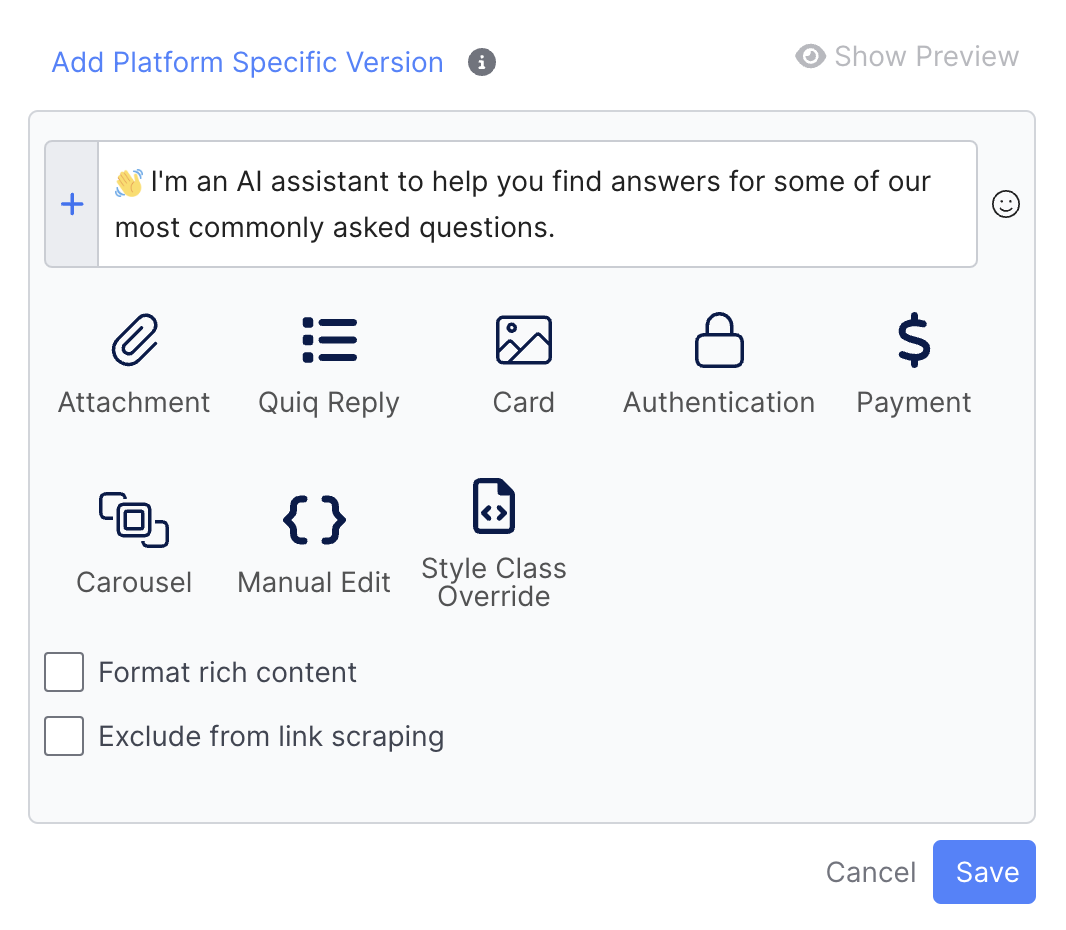
The Send a Message action, in both its visual and programmatic forms, has full access to Quiq's deep rich messaging feature set including quiq replies, cards, carousels, auth and pay message support. The studio provides deep support for visually configuring rich message content. For programmatically configuring rich message content, see the Rich Messaging Gude
Visually configured Send a Message actions furthermore support Message Variables, including session fields. Use this if you have LLM-generated message content that you want to reference in an otherwise visually configured message.
Programmatic Payload Example
Sending a basic message that only contains text content:
{
"action": "sendMessage",
"message": {
"text": "Hello Customer!"
}
}
Send Catalog Message
Available in: Flow Editor
Enables you to send a message from the Message Catalog. Catalog messages are configured outside of AI Agents and can be maintained by less technical users. They are useful for static messaging content (w/ Variable Support) such as legalese or seasonal promotion content.
Catalog Messages are managed within the Admin section, but you can easily create or edit Catalog Messages inline once you've selected the action using the Plus and Edit Icons:
Start Typing Indicator
Available in: Flow Editor
Starts the typing indicator on messaging platforms that support it, such as Apple Messages for Business, Facebook etc.. Showing a typing indicator is always a good idea to provide a more natural feeling conversation, especially if your AI Agent has any latency due to chained LLM calls.
AI Agents have Special Events that can interrupt the normal flow. These are essentially events/triggers that can occur anywhere in an AI Agent's flow and have a special global handler to deal with them.
Voice Options
When the AI Agent Voice Enabled toggle button in the Voice Configuration tab is enabled, builders can define a waiting message to be sent on Voice, as well as define the delay before the message gets sent:
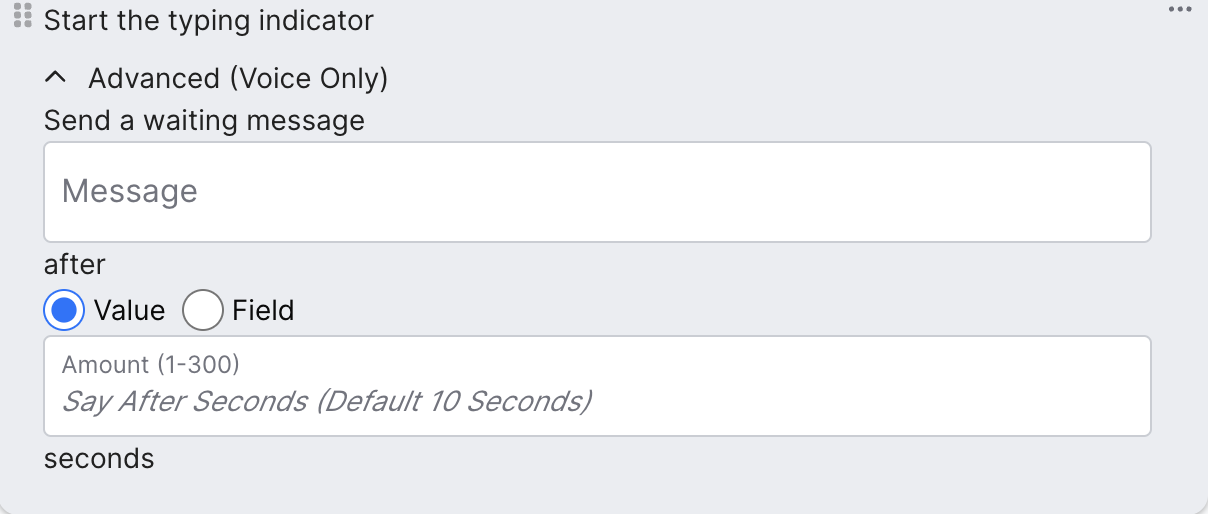
Set the Conversation Summary
Available in Flow Editor
The Set the Conversation Summary allows you to create custom conversation summaries that will appear in place of the standard Conversation Summary when a conversation gets passed to a human agent. This can be helpful to tailor the information that gets passed to the agent based on the context of the conversation.
For example you may want a custom summary for Sales conversations that explicitly mentions the products the user asks about, or any other purchase criteria they're shared.
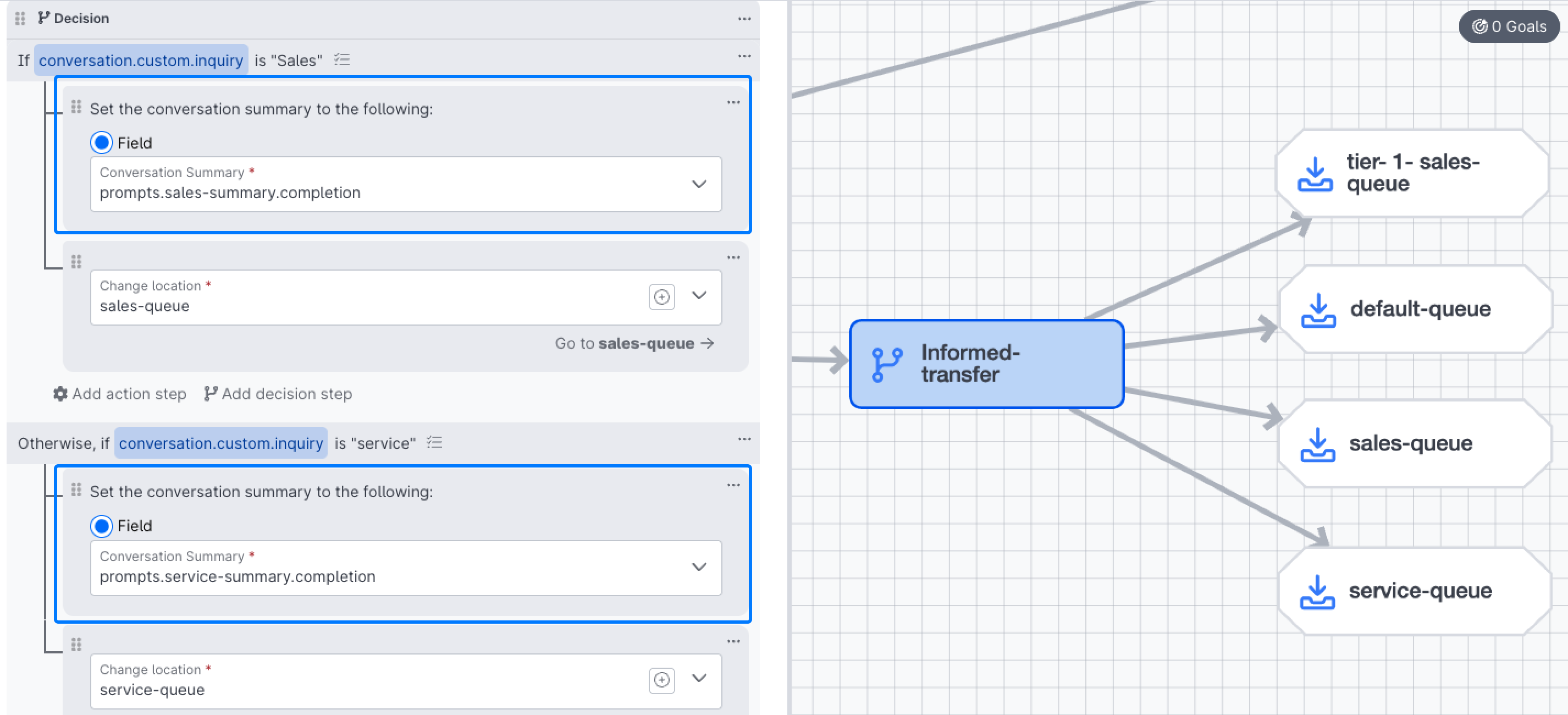
Two custom Conversation Summaries, one for sales inquiries, one for service inquiries
The Conversation Summary action takes either a field or text as an input, while they're may be some cases you'd use static text, most often you'll want to be using a completion from a custom summary prompt you create.
Voice Specific Actions
Below you'll find a list of actions that are specific to building AI Agents on Voice. In order to see these actions, you'll need to enable them via the AI Agent Voice Enabled toggle button in the Voice Configuration tab.
Set Text to Speech Voice Model
Available in: Flow Editor
The Set Text to Speech Voice Model action enables builders to define a specific voice model, as well as a fallback voice model, at any point in the flow. This can be coupled with decision steps to contextually switch voices depending on the customer's language, or any other field:
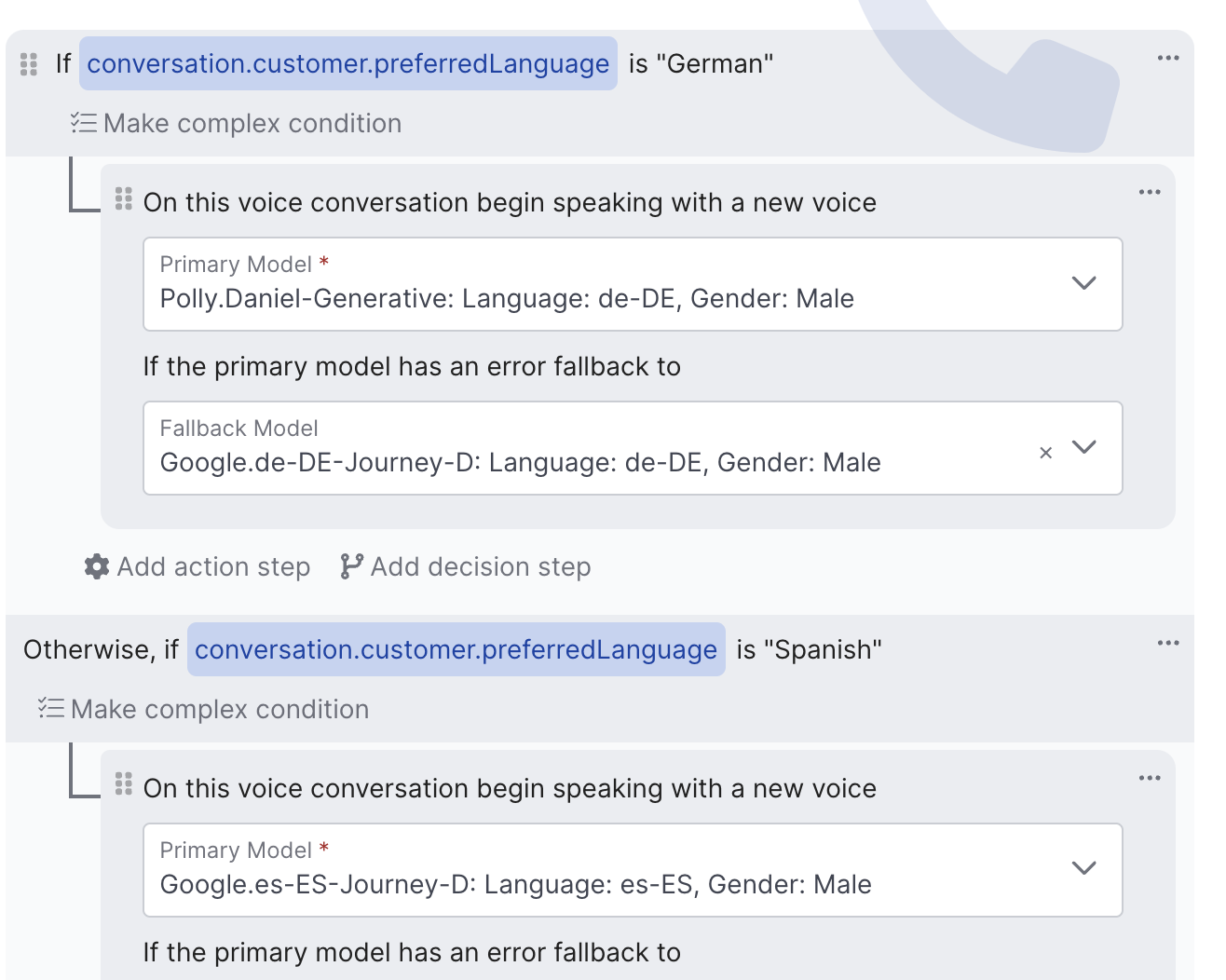
Set Speech to Text Voice Model
Available in: Flow Editor
The Set Speech to Text Voice Model action functions much in the same way as the Set Text to Speech Voice Model action does, enabling builders to define a Primary Model and a Fallback Model for Speech to Text transcription:
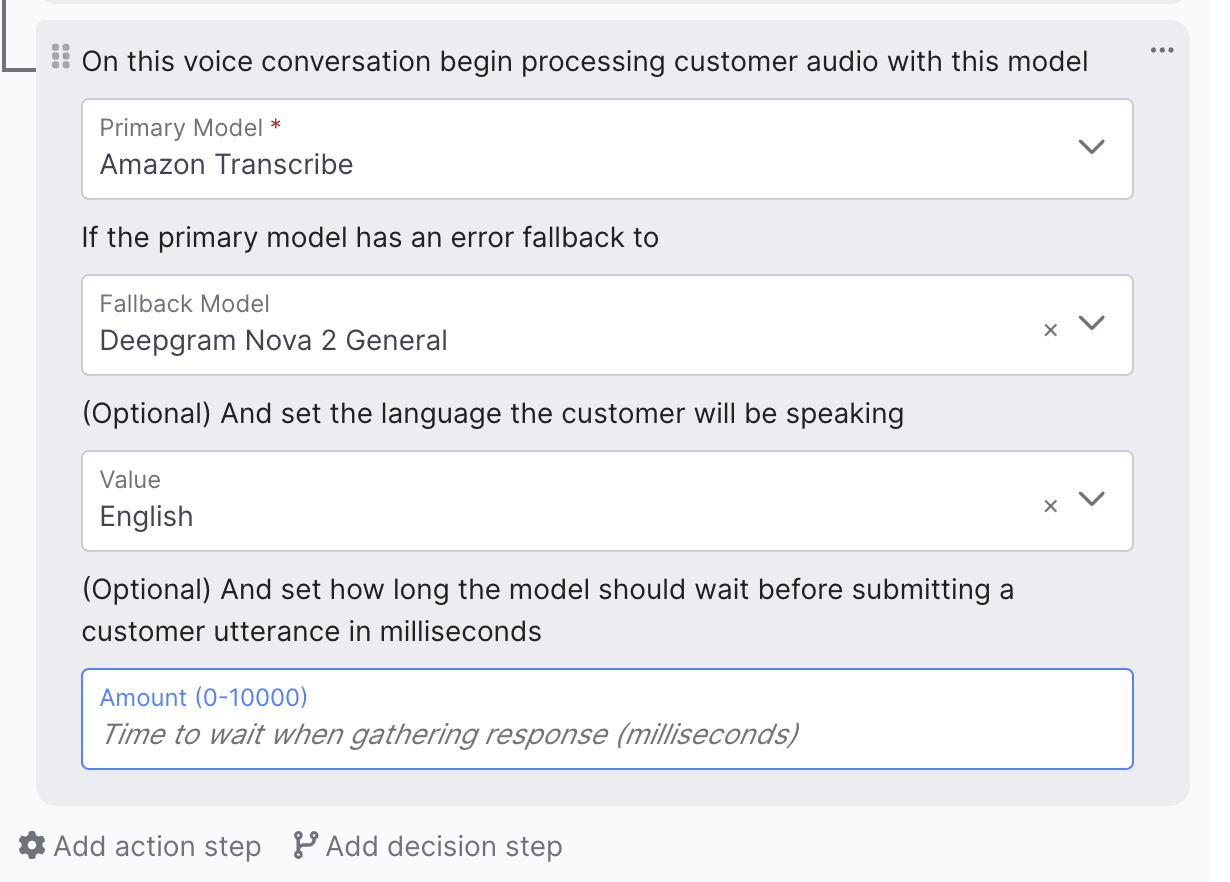
Builders can also define an optional language the customer will be speaking, as well as define how long the model should wait before submitting the customer utterances.
Continue the Conversation when the Call Ends
Available in: Flow Editor
This action enables builders to define whether or not they'd like to continue the conversation on a secondary messaging platform (so long as the user has one established) after the call ends:

This can be useful if the AI Agent is trying to shift from voice to messaging at a particular point in the conversation, or if you want to ensure that certain types of conversations don't end if the user accidentally hangs up.
Updated about 2 months ago
